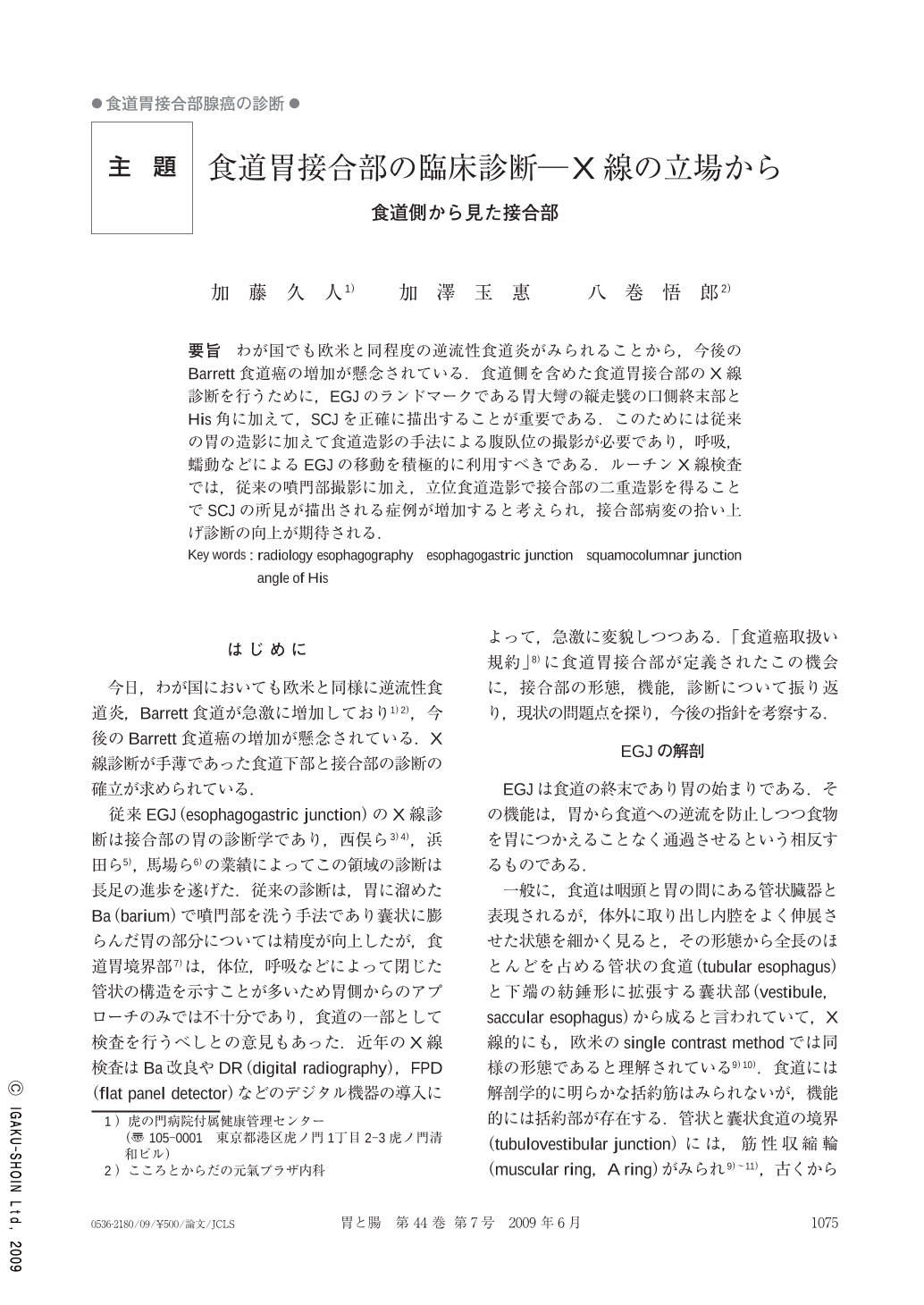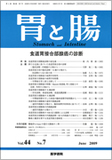Japanese
English
- 有料閲覧
- Abstract 文献概要
- 1ページ目 Look Inside
- 参考文献 Reference
- サイト内被引用 Cited by
要旨 わが国でも欧米と同程度の逆流性食道炎がみられることから,今後のBarrett食道癌の増加が懸念されている.食道側を含めた食道胃接合部のX線診断を行うために,EGJのランドマークである胃大彎の縦走襞の口側終末部とHis角に加えて,SCJを正確に描出することが重要である.このためには従来の胃の造影に加えて食道造影の手法による腹臥位の撮影が必要であり,呼吸,蠕動などによるEGJの移動を積極的に利用すべきである.ルーチンX線検査では,従来の噴門部撮影に加え,立位食道造影で接合部の二重造影を得ることでSCJの所見が描出される症例が増加すると考えられ,接合部病変の拾い上げ診断の向上が期待される.
It is estimated that Barrett's esophagus and Barrett's carcinoma will increase in the near future in Japan as in the Western countries, because of increasing incidence of reflux esophagitis. In this background, precise radiological determination of EGJ is required to diagnose whether a lesion is located at the lower esophagus or at the proximal stomach. Currently radiological EGJ is defined by the point where the gastric rugae cease and the angle of His. But it is often difficult to determine EGJ, because these findings are often invisible in cases with mild or physiological hiatal hernia. Therefore, in addition to these findings, location of SCJ is necessary to determine EGJ, because EGJ always exists at or below the SCJ. In preoperative double contrast examination via a nasal tube, SCJ is depicted easily in a prone position. In one third of routine examinations, SCJ is detected successfully by esophagography in an upright position, and contributes to diagnosis of EGJ. In conclusion, depiction of the SCJ in addition to the gastric rugae and the angle of His are practicable and necessary to determine the EGJ.

Copyright © 2009, Igaku-Shoin Ltd. All rights reserved.


